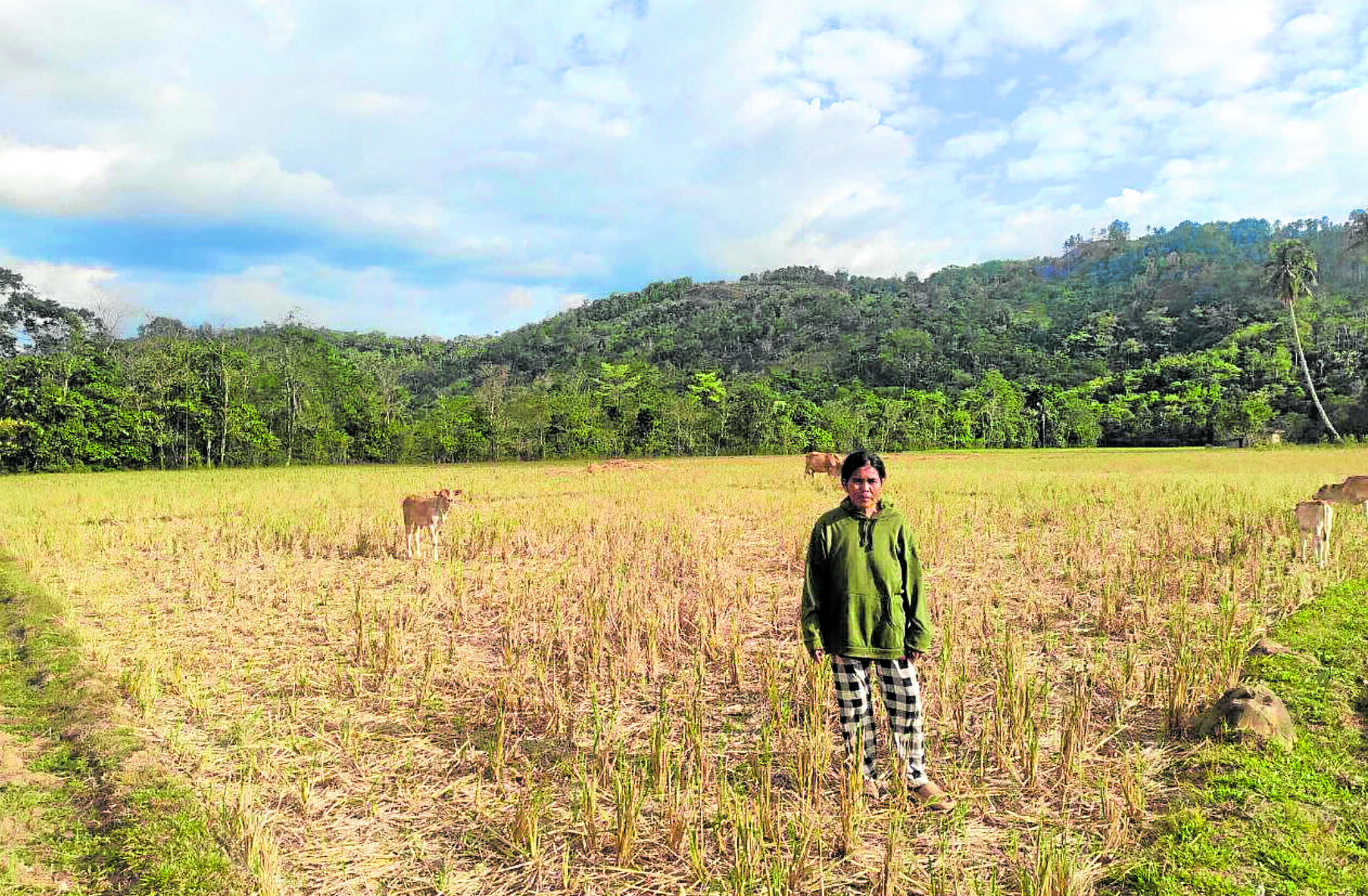
ALL DRY A farmer in Pagadian City in Zamboanga del Sur province visits her rice farm, now all dried up due to the absence of rain amid the recent El Niño weather phenomenon. The Zamboanga Peninsula is among the 11 regions in the country that were worst hit by the dry spell and drought early this year. —photo courtesy of Pagadian City Agriculture Office
MANILA, Philippines — The Department of Agriculture (DA) plans to distribute in September some P12 billion in cash aid to help rice farmers meet their daily subsistence and personal needs.
The DA is providing P5,000 to each of the 2.4 million rice farmers who are eligible beneficiaries under the Rice Farmers Financial Assistance (RFFA) program, which is funded from the excess tariff collections from the importation of the staple food.
Under the Rice Tariffication Law (RTL), the government allots P10 billion a year from tariff revenues for the Rice Competitiveness Enhancement Fund, which aims to finance the distribution of high-yielding seeds, empower farmers through various training sessions, give out farm machinery, and offer credit support.
READ: Review of rice tariffication law pushed
Any amount exceeding this can then be used for the RFFA and other programs to help rice farmers.
“We are rushing [the distribution] and hopefully, I’m targeting to provide P12 billion [to our rice farmers] probably by September,” Agriculture Secretary Francisco Tiu Laurel Jr. said at an event in Makati City late Tuesday, noting that the P12 billion was already released by the Department of Budget and Management last December.
The amount is almost the same as the P12 billion worth of cash grant released by the DA to farmer beneficiaries of the RFFA in 2023.
Compensation scheme
The RFFA seeks to provide relief to eligible rice farmers throughout the implementation of the RTL, which was enacted in 2019 and will lapse in 2024.
Under this program, rice farmers who are tilling two hectares or less are compensated for their projected reduction or income loss as a result of the lifting of the quantitative restriction on rice imports.
The RTL liberalized rice importation, export, and trading and lifted the quantitative import restriction on the commodity over five years.
Sen. Cynthia Villar, chair of the Senate committee on agriculture, food and agrarian reform, filed Senate Bill No. 2601 in March this year to extend the RTL for another six years or until 2031, to sustain the gains made by the law, including stable rice prices and improvement in farmers’ livelihood.
The proposed measure also seeks to allocate P2 billion annually over the next six years to develop small water-impounding projects to ensure adequate water supply in rice areas amid the recurring threats of the El Niño dry spell.
Crop diversification
The Bureau of Customs has collected P16 billion in rice tariffs as of April this year, or more than half of the P29.93 billion earned for the whole of 2023.
Tiu Laurel said the DA was hoping to get a total of P20 billion in excess tariff collections from last year for rice farmers’ assistance, land titling and helping farmers cultivate crops other than the staple Filipino food.
“We will allocate P12 billion for cash assistance, another P1 billion for land titling of farmers by the [Department of Agrarian Reform] and the remaining P7 billion for crop diversification to high-value crops,” he added.